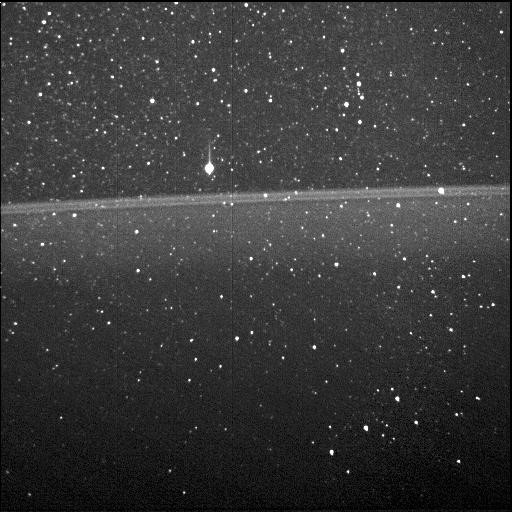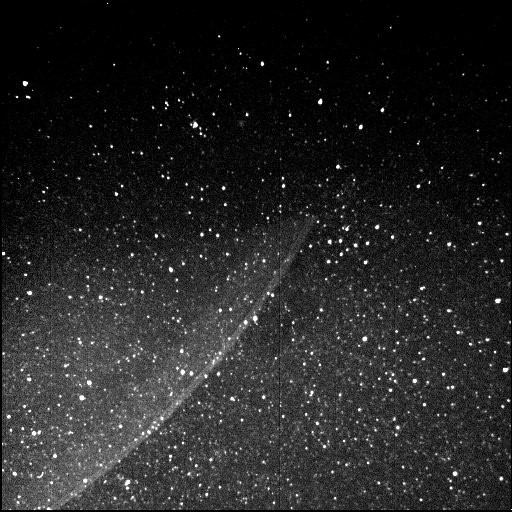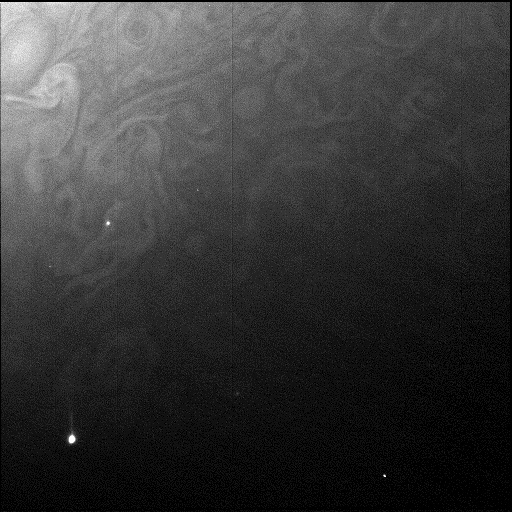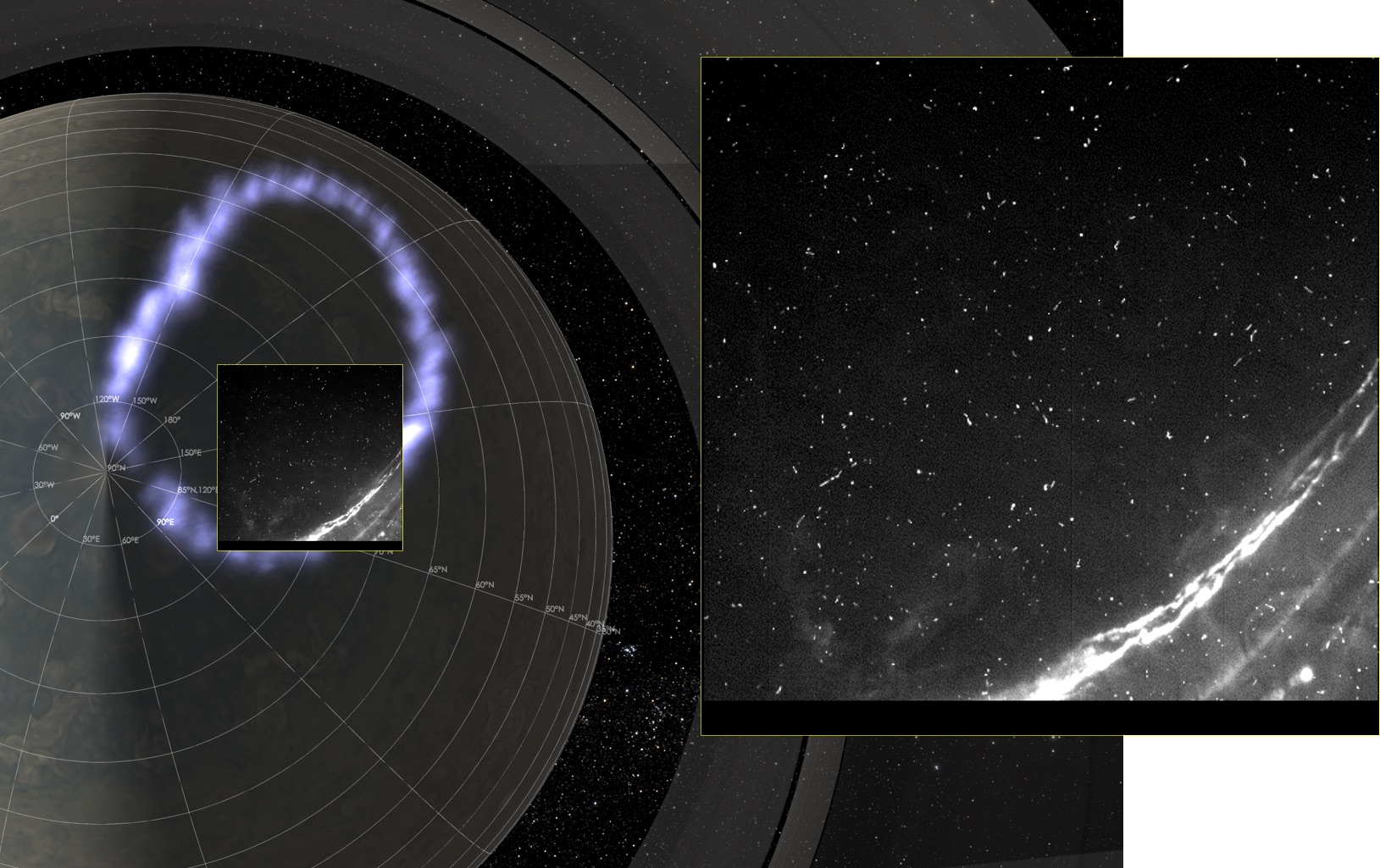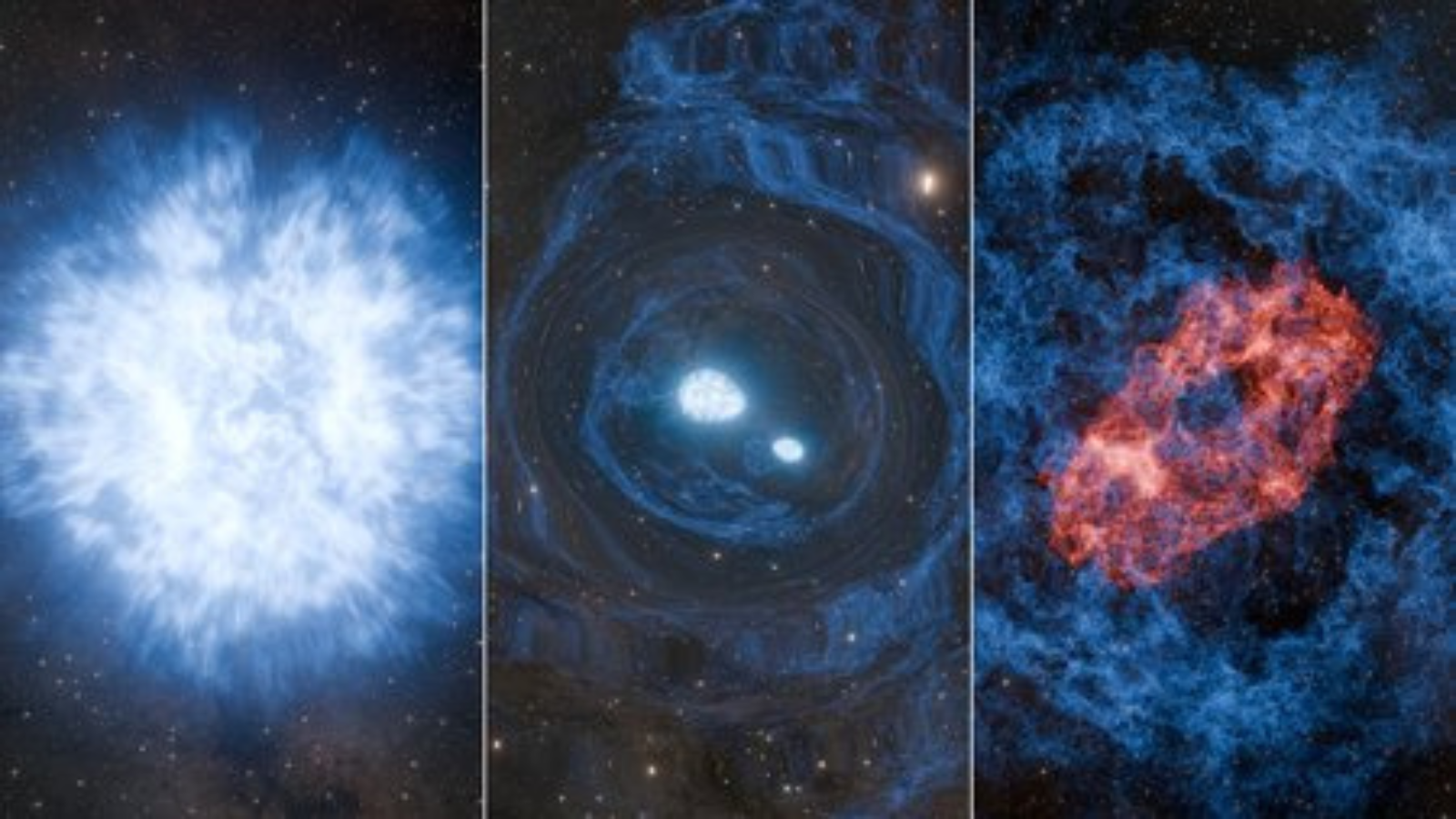Auroras, Lightning and Rings of Jupiter Amaze in Surprising NASA Juno Photos
Its main job is to spot the stars, but an ultrasensitive navigation camera on NASA's Juno spacecraft is returning amazing images of Jupiter's rings, auroras, lightning, and even its moonlit dark side.
Scientists discussed the results from the camera alongside other Jupiter revelations during a briefing Dec. 12 at the American Geophysical Union's annual meeting in Washington, D.C. Juno is approaching the halfway point on its primary mission, with its 16th science pass by the planet set for Dec. 21.
That camera is called the Stellar Reference Unit, or SRU for short. According to Heidi Becker, Juno's radiation monitoring investigation lead at NASA's Jet Propulsion Laboratory in California, the camera's "day job" is to cut through interference from the intense radiation surrounding Jupiter to spot the stars, comparing them to a database to figure out Juno's precise location and orientation during its 53-day, elongated orbits of the gas giant. [In Photos: Juno's Amazing Views of Jupiter]
"It's really hard to do that engineering job on Juno because we're flying Juno through the most violent planetary radiation environment there is," Becker said during the briefing, which was webcast live online. "Even though we had to shield the SRU more than six times heavier than we've shielded the radiation vault [which protects Juno's main computer and other sensitive components], there still are very high-energy electrons in that environment that will penetrate the SRU shielding and create this static that you see in the star image."
But rather than seeing a disruption, the team at JPL uses that "snow" to make measurements of how intense the radiation is over different parts of Jupiter — they've already noticed that the high-latitude radiation belt is less powerful than models suggested.
"We use noise as data to figure out what the environment is on the outside of Juno, because we're flying where nobody flew before," Becker said.
During its first data-collecting dive past Jupiter in August 2016, SRU grabbed the first-ever view of Jupiter's faint rings from the inside. The image also reflects the navigation side of SRU — Orion's Belt can be seen dotting down the lower right of the image, and the blazing star Betelgeuse can be seen just above the ring.
Breaking space news, the latest updates on rocket launches, skywatching events and more!
And that view was only the beginning: "Once we started to get a sense of what else the SRU can do as a low-light camera, my team and I kind of got addicted and kept asking the question: What else can this camera bring back that's new, that's never been seen before, or that's never been seen in the way that only the SRU can see it?" Becker said.
The spacecraft's main visible-light camera, called JunoCam, has been returning spectacular images for the public to process, and has proved useful for science in its own right, researchers said at the briefing. And in the low-light conditions on Jupiter's dark side, Becker said, SRU has returned views that rival that camera's detailed view of the planet's swirls.
"When we first saw this image, we thought 'did our data get mixed up with JunoCam's?'" Becker said. But, no, it was indeed from the SRU, with the planet's cloud tops lit by sunlight reflected off the volcanic moon Io, taken just 66,000 miles from the cloud tops.
In addition, the researchers spotted two bright dots of lightning — visible to the right of the image — providing the closest view of Jupiter's lightning from any imager. Because the spacecraft's microwave radiometer, which has also proved a good lightning detector, faces the same way as the SRU, researchers can eventually combine their measurements to learn about the phenomenon in more depth.
Juno's other instruments have provided incredible views of the planet's auroras in ultraviolet and infrared light, but because of its dark-side views SRU has been able to contribute in the visible spectrum, too, showing the ghostly lights circling the planet's pole.
"This is another first: This is the closest view of Jupiter's aurora that has ever been made by a visible[-light] camera," Becker said. "It's an amazing complement to what Juno is already bringing back in the ultraviolet and in the infrared. And, again, we're seeing amazing structure because of the high resolution of the camera and Juno's close flight to the camera."
This image also reveals another dot of lighting, in the lower right, and the squiggles of high-energy electrons beaming off the planet's poles — "so SRU was doing three kinds of science when it took this picture."
"It's really exciting to see what we can see out of an engineering camera, and we're really erasing all the boundaries between who or what can make a contribution to engineering or science or art," Becker added.
The $1.1 billion Juno mission launched toward Jupiter in August 2011 and arrived in orbit around the planet in July 2016. Since then, it's examined the planet during its long, looping orbits to learn about its interior, cloud patterns and weather, magnetic field, radiation and more.
"We have already rewritten the textbooks on how Jupiter's atmosphere works, and on the complexity and asymmetry of its magnetic field," Scott Bolton, principal investigator for Juno and a researcher at Southwest Research Institute in Texas, said in a statement. "The second half should provide the detail that we can use to refine our understanding of the depth of Jupiter's zonal winds, the generation of its magnetic field, and the structure and evolution of its interior."
Email Sarah Lewin at slewin@space.com or follow her @SarahExplains. Follow us on Twitter @Spacedotcom and on Facebook. Original article on Space.com.

Sarah Lewin started writing for Space.com in June of 2015 as a Staff Writer and became Associate Editor in 2019 . Her work has been featured by Scientific American, IEEE Spectrum, Quanta Magazine, Wired, The Scientist, Science Friday and WGBH's Inside NOVA. Sarah has an MA from NYU's Science, Health and Environmental Reporting Program and an AB in mathematics from Brown University. When not writing, reading or thinking about space, Sarah enjoys musical theatre and mathematical papercraft. She is currently Assistant News Editor at Scientific American. You can follow her on Twitter @SarahExplains.
